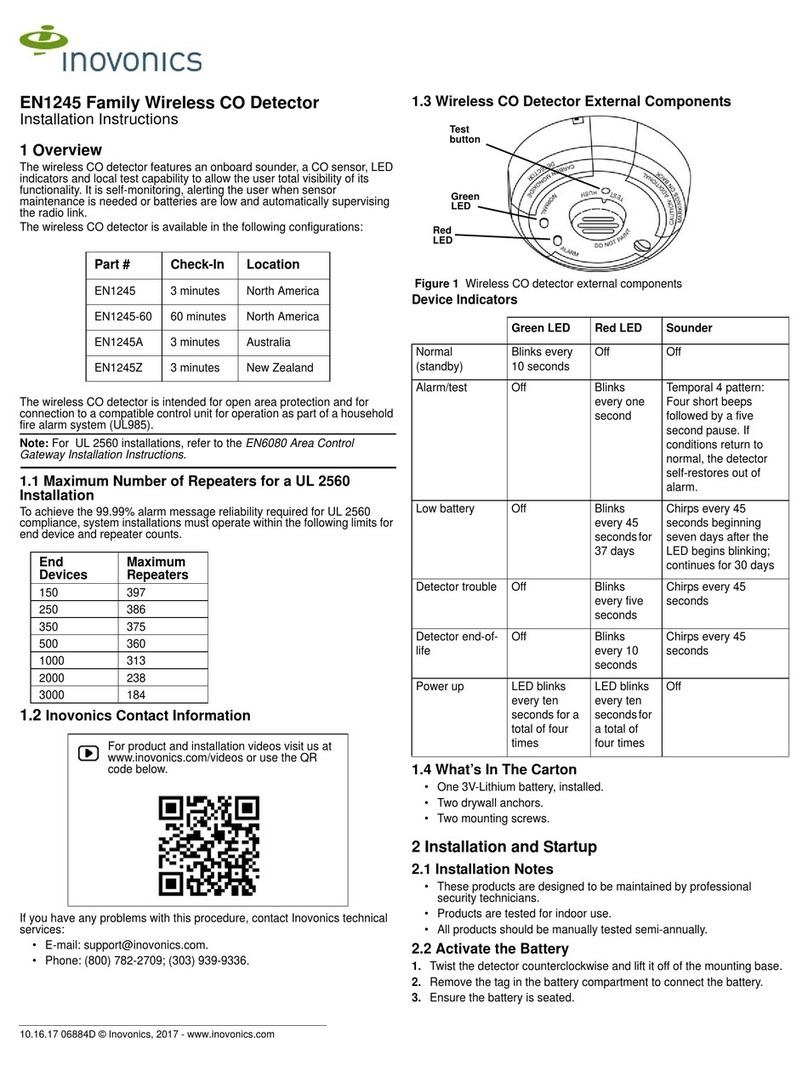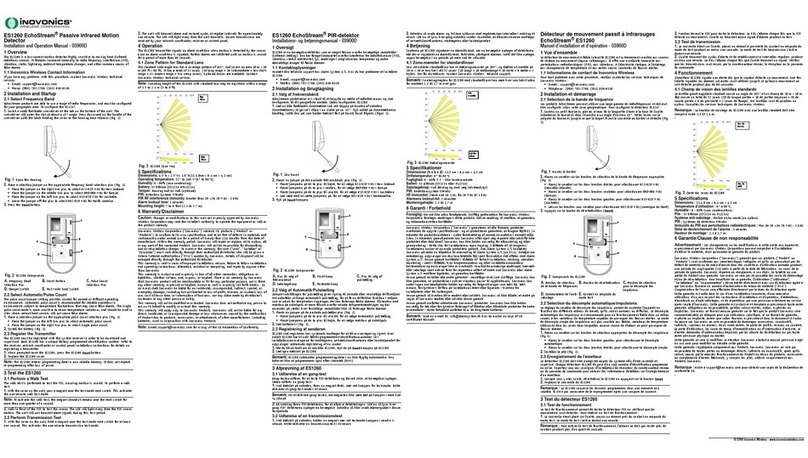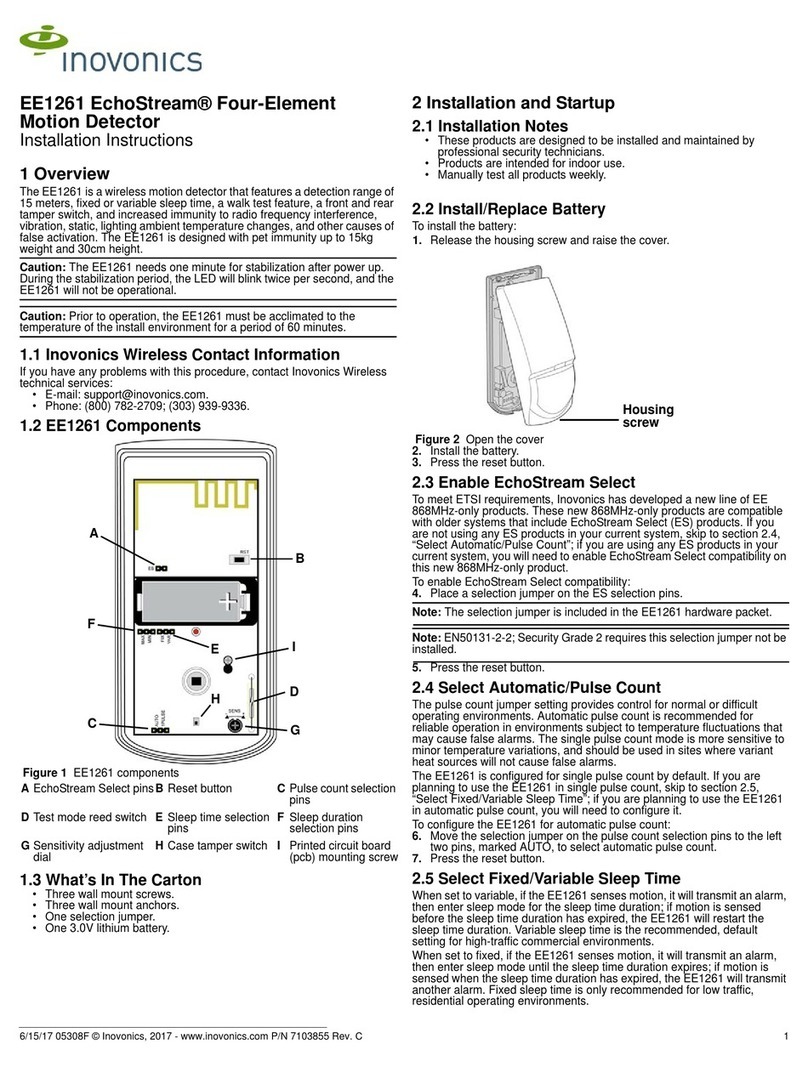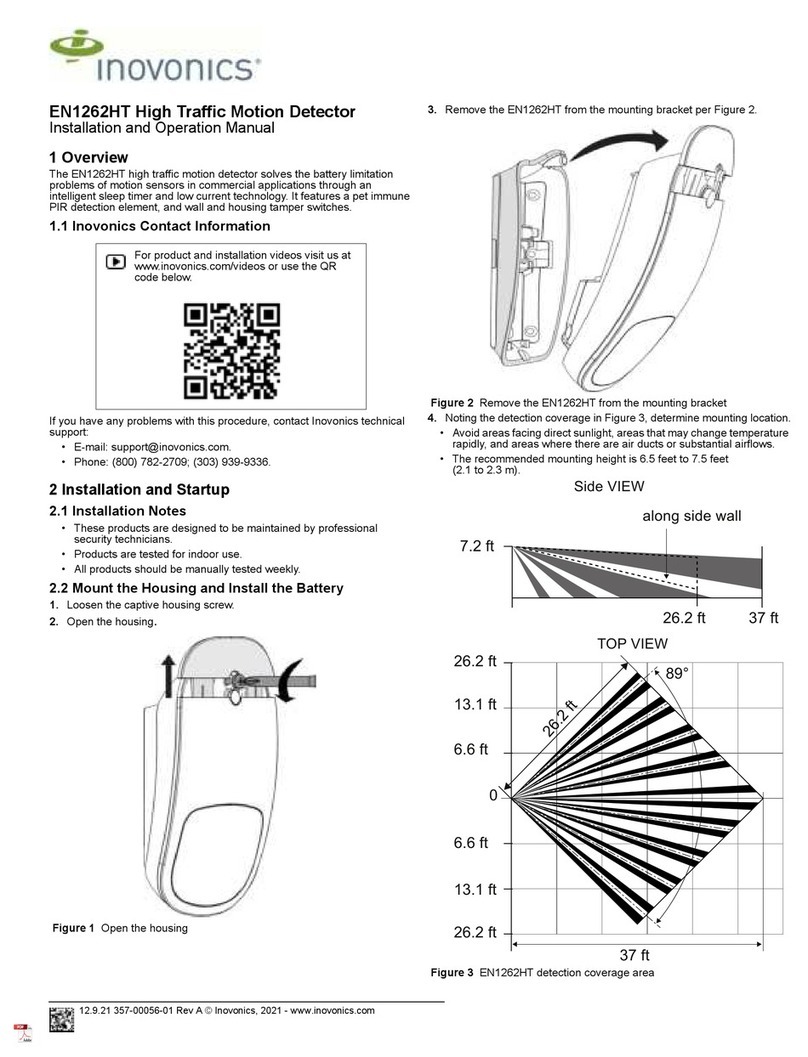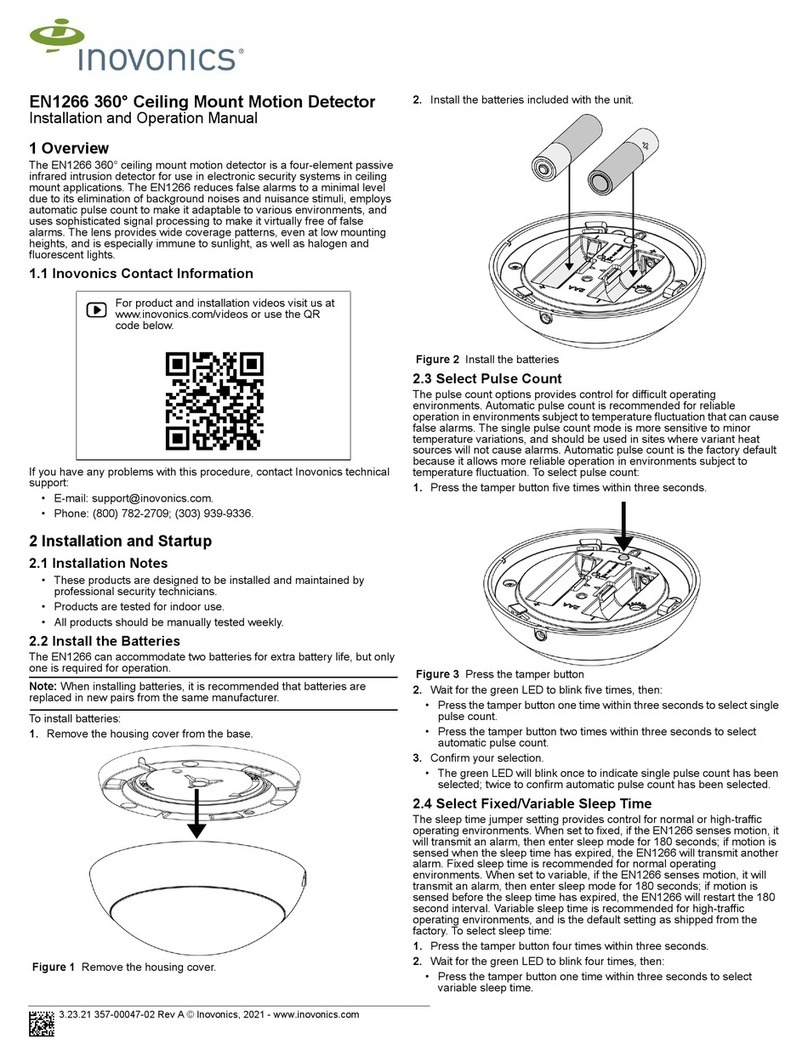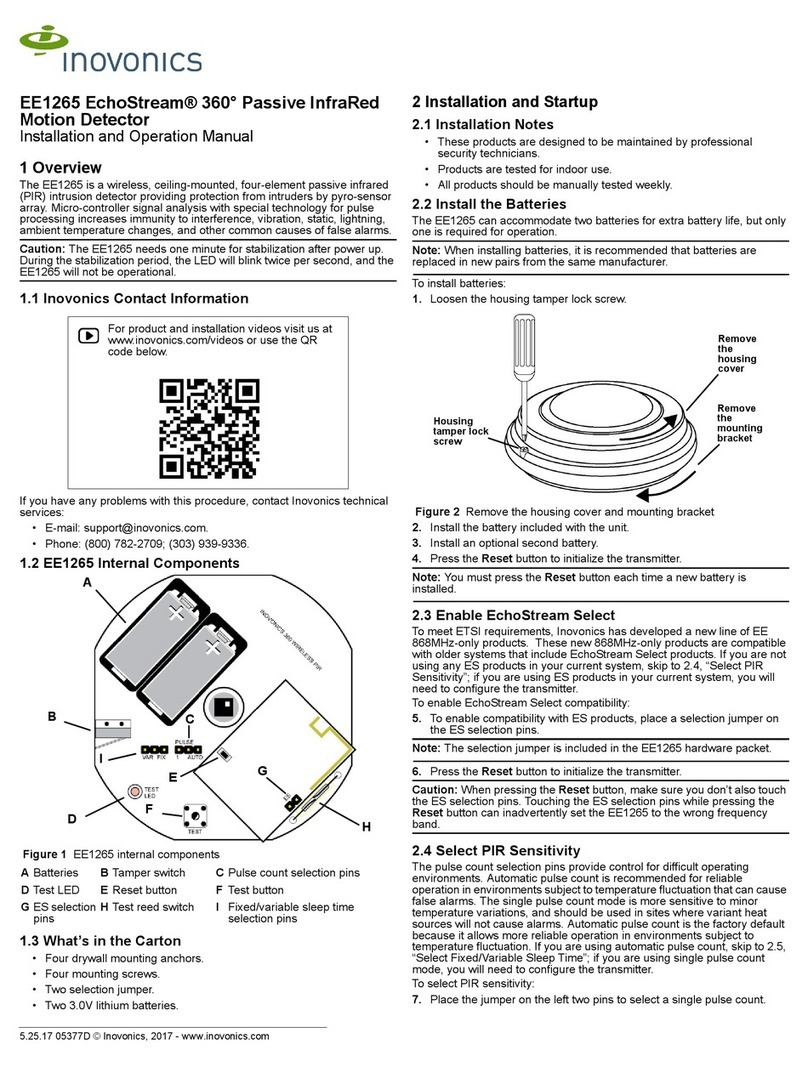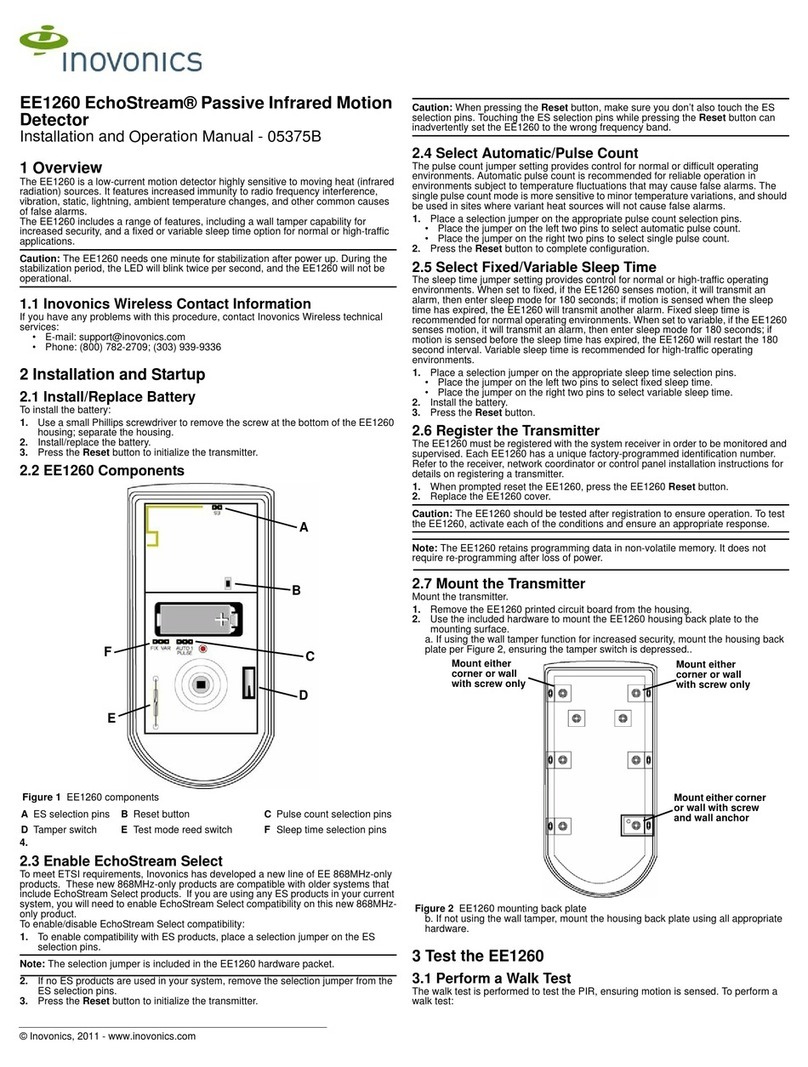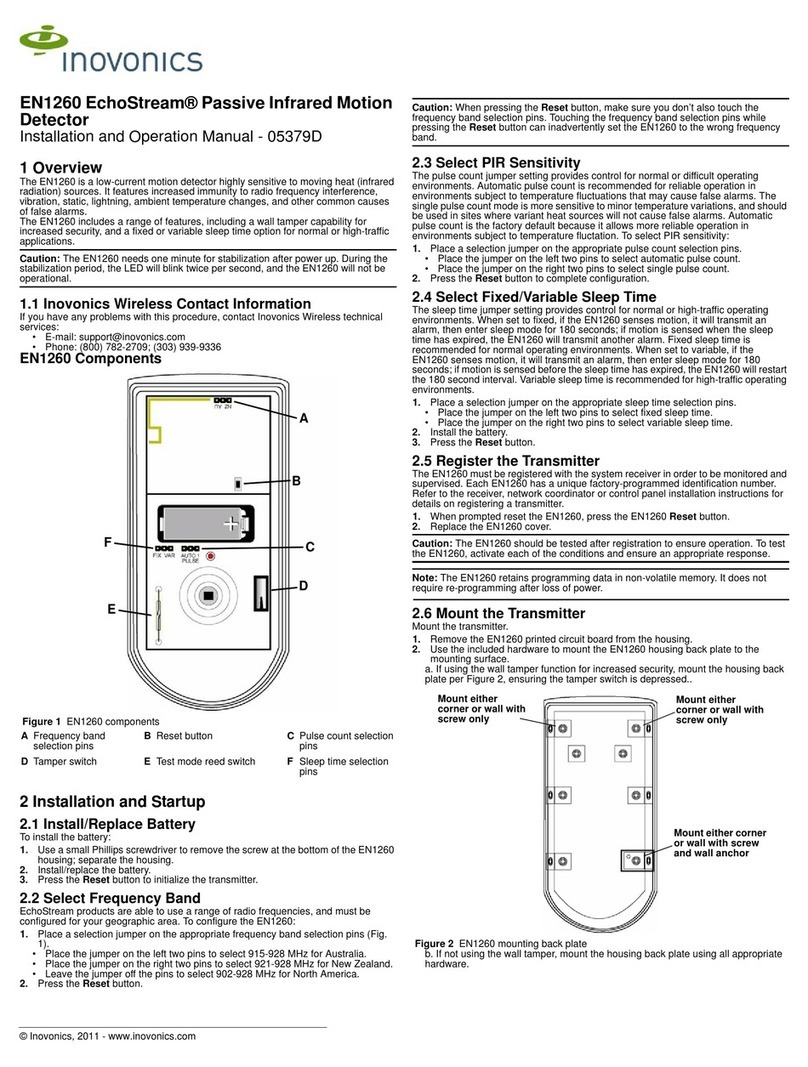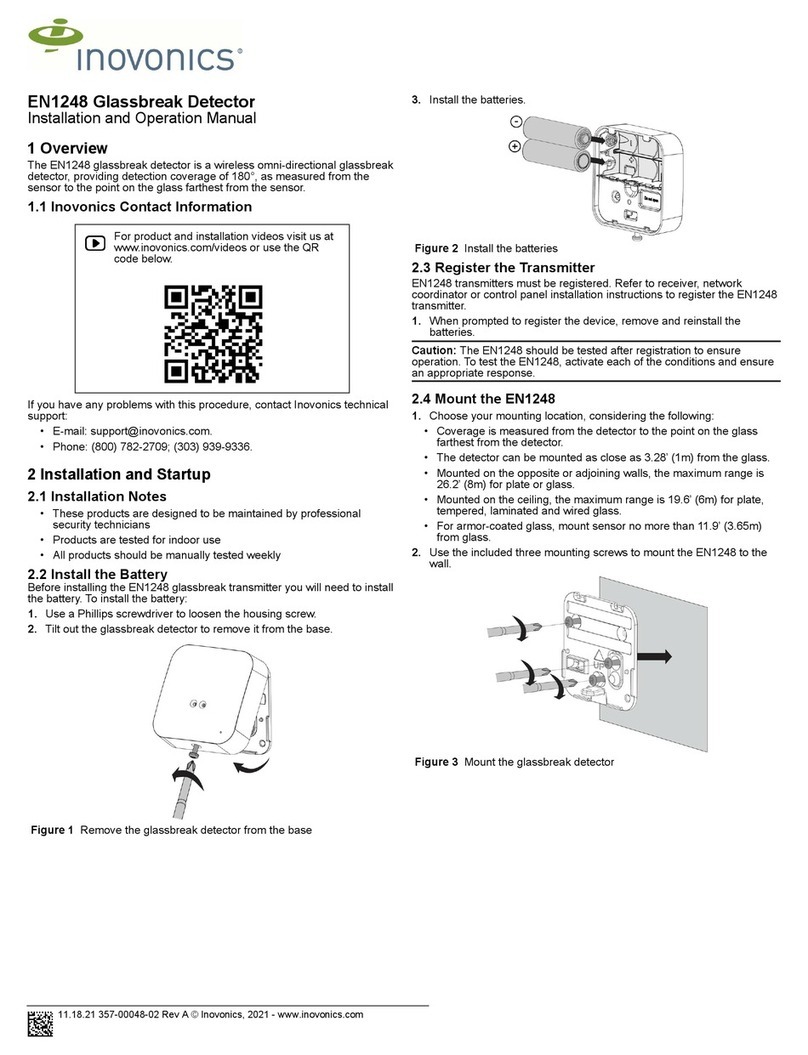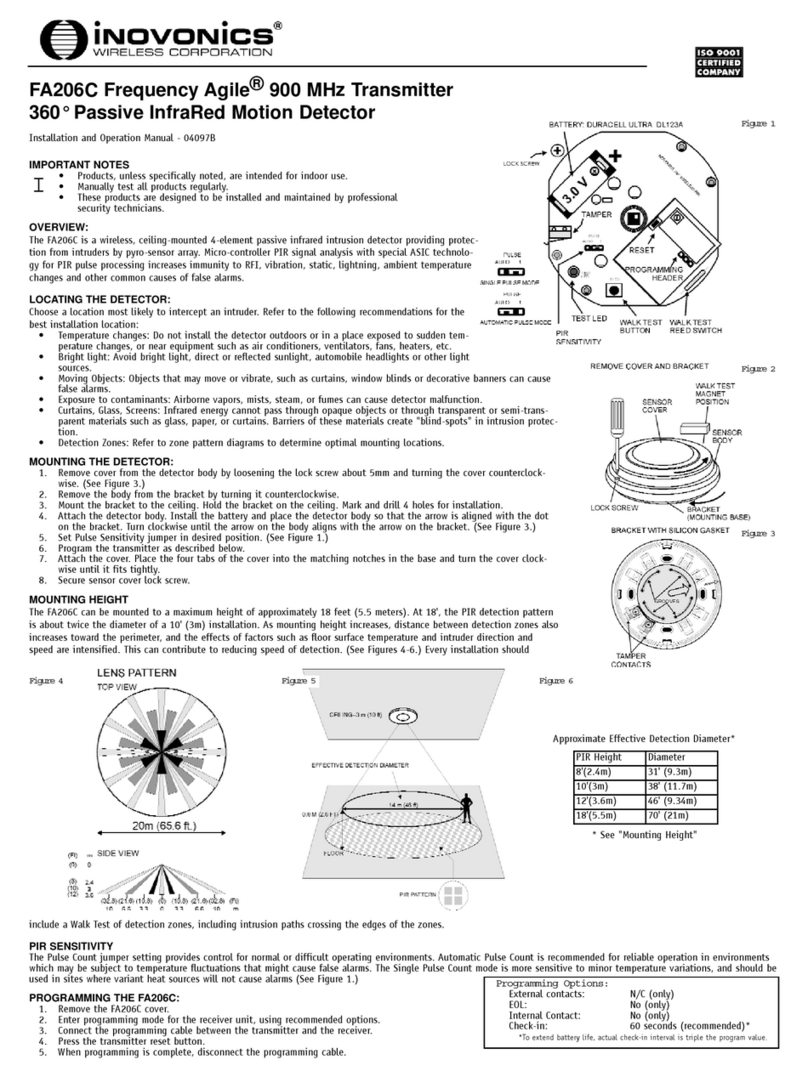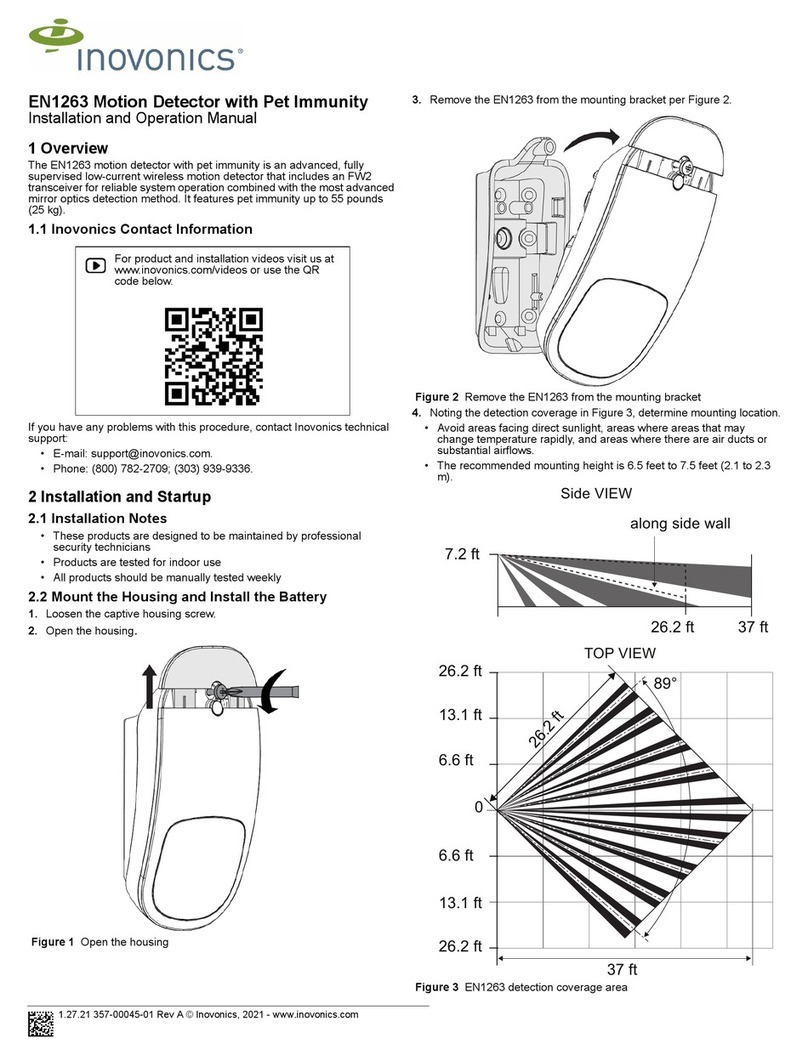3 / 4 October 2013 Rev 1
Packaging
The package contains:
• 1x wireless detector
• 3x wall plug & screw sets
• 2x additional curtain shutters
• 1x tamper cup
• 2x tamper caps (different lengths)
• 1x plastic opening tool
• 1x installation manual
•1x drilling template for fixing holes
GJD’s Inovonics®enabled D-TECT®
The wireless detector uses a quad pyro where both sensors
must trigger to cause the detector to signal an alarm ensuring
precise and reliable presence detection.
Programmable options include a variable pulse count and a
choice of detection ranges up to 30 meters.
The dual-axis tilt sensor allows 180° of pan and 90° of tilt. This
increases the speed of the outdoor installation and provides
accurate aiming of the detection pattern.
Precision electronics, digital white light filtering, and double
shielding eliminates false alarms from the sun.
The detector housing has a professional appearance with the
sensing module hidden behind the front cover.
Quick installation
1. Place two CR123 batteries into the detector battery
holders. Observe the polarity. See figure 4, item 1. The
detection LED will flash 3 times.
2. Enter the learning menu on the control panel/receiver. To
learn the device follow the instruction given in the Inovonics
documentation.
3. Press and release the programming button once to learn
the device. ( Fig 10, item 2).This action also activates walk test
mode. Note: The learn process may take up to 10 seconds
from pressing the programming button. Learn will be
confirmed on the control panel/receiver.
4. The detector will take approximately 3 minutes to settle.
The detection LED is now enabled for five minutes.
5. Mount the detector following the instructions below.
The default settings are:
• Range: 30 meters
• Pulse count: 1
Fitting the detector
Protect the electronics against water. Trapped moisture can
affect or damage the unit.
Mounting holes should be sealed from within the detector using
acrylic (non-silicone based) sealants. Silicone sealants must
not be used as vapours may corrode the electronics and
metal parts.
Note: The Inovonics transmitter is supplied with the ES link
disabled. If this is required then the transmitter module will
need to be removed to enable the link then replaced.
Ensure the detector's field of view is unobstructed.
Mounting the detector:
1. Drill the wall to accept the fixing screws and the tamper
cup (if used). See Figures 1 and 3.
A hole-drilling template is provided.
Notes
• Use the tamper cup on uneven surfaces.
• Optimum height for the detector is 3m. Higher
mounting heights will result in reduced detection
range.
2. Remove the cover assembly using the plastic opening tool
and by loosening the locking screw. See Figure 2.
3. Screw the unit to the wall. Ensure the tamper pin is
correctly located and the tamper switch is closed.
Two different length tamper feet are provided for uneven
surfaces. The tamper foot is a push-fit see Figure 1.
4. When the detector is aligned, powered and programmed:
a. Fit the cover.
b. Loosely tighten the locking screw.
c. Push the two side plastic latches into the base.
d. Tighten the locking screw.
Batteries
Only use CR123 3 V Lithium batteries.
Observe correct polarity when fitting.
Battery safety information
• Do not put in a fire
• Do not charge
• Do not heat
• Do not short circuit
• Do not disassemble
• Only fit batteries of the same type and voltage
To preserve battery life the detector has a 2-miniute sleep
timer after detection. This is reduced to 8 seconds during walk
test. See also “Walk test” section on page 4.
Beam alignment and masking
The multifunction lens fitted to the GJD1030 detector focuses
seven long-range and seven medium to short-range curtain
beams. The circuitry detects changes in heat and movement in
the beam pattern. The presence of trees, shrubs, ponds, boiler
flues, black tarmac and animals should be considered when
positioning the detector.
PIR sensors are more sensitive to movement across the
beams and less sensitive to movement directly towards or
away.
The detector is fitted with two sliding shutters to reduce the
detection angle.


